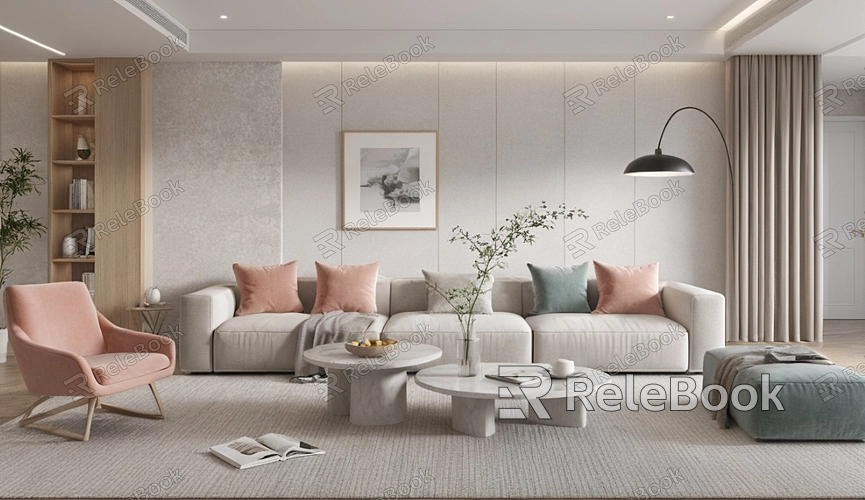How to Create High-Detail 3D Models?
With advancements in technology, 3D modeling has become increasingly important across various fields. Whether in game development, animation, or product design, high-quality 3D models can significantly enhance visual appeal and user experience. This article will explore how to create high-detail 3D models, sharing practical tips and steps to help you achieve better results in this field.

Understand the Basics of 3D Modeling.
Before starting your modeling journey, it’s essential to understand the fundamental concepts. A 3D model is made up of polygons, vertices, and normals. Each model can be broken down into simple geometric shapes. Grasping these basics will help you better comprehend the subsequent modeling processes.
There are various modeling software available, such as Maya, Blender, and ZBrush. Each has its unique features and advantages. Choosing the right tool can make your modeling process smoother and more efficient.
Choose Suitable Reference Material
To create high-detail 3D models, reference material is crucial. Whether it’s blueprints, photos, or real objects, reference material helps you accurately capture details. Look for high-resolution images, especially from multiple angles. These materials will serve as the foundation for your modeling work.
You can obtain reference material through online searches, design books, or by photographing real-life subjects. Always refer to these materials while building your model to ensure proportions and details align with the real object.

Begin Modeling
Start by creating basic shapes in your modeling software. Typically, you would begin with simple geometric forms like cubes or cylinders. Gradually adjust these shapes to add detail. At this stage, don’t strive for perfection; focus on building the overall silhouette of the model.
As you progress, employ subdivision modeling techniques. This method allows your model to appear smoother and more detailed. Using subdivision surfaces can greatly enhance the visual quality of your model.
Add Details
Details are key to creating high-quality 3D models. Use sculpting tools to add textures and shapes. Software like ZBrush is particularly suited for detailed sculpting. By adjusting brush size and strength, you can achieve more natural detail.
Additionally, utilizing texture mapping can enhance the realism of your model. Through UV unwrapping, you can lay the model's surface flat for easier texturing. Opt for high-resolution textures to ensure every detail is represented.
Use Appropriate Materials and Lighting
Materials and lighting have a significant impact on the final appearance of your model. Choose suitable material properties, such as reflectivity, transparency, and glossiness, to boost visual appeal. Adjust these parameters based on the nature of the model, as the material for metal surfaces will differ from that for wood.
Set up light sources in your scene, using different types like point lights, directional lights, and spotlights. Proper lighting can highlight the model’s details and create a pleasing atmosphere.
Rendering and Post-Processing
After completing modeling and material setup, proceed to rendering. Select an appropriate rendering engine, such as V-Ray or Arnold, and adjust rendering settings according to project needs. The rendering process will present the final effect.
Once rendering is complete, you can use post-processing software like Photoshop for further adjustments. Tweaking brightness, contrast, and color balance will help ensure the final effect meets your expectations.
Keep Learning and Practicing
Creating high-detail 3D models requires continuous learning and practice. Participate in related courses, watch tutorials, and exchange experiences. Over time, you will master more techniques and improve your modeling skills.
Moreover, engaging in real projects to accumulate experience is vital. Tackling real-world challenges will help you grow further in the modeling field.
Creating high-detail 3D models involves understanding the basics, choosing the right tools and reference materials, employing subdivision modeling techniques, focusing on detail and material selection, and rendering and postprocessing. Continuous learning and practice are key to skill improvement. I hope this article provides you with practical tips to elevate your modeling abilities. Finally, feel free to visit the Relebook website to download high-quality 3D models and textures and inspire your creativity and possibilities.
FAQ
How long does it take to create a high-detail 3D model?
The time required varies based on project complexity; simple models may take a few hours, while complex ones could take several days or weeks.
Which software should I choose for 3D modeling?
The choice of software should depend on personal needs and comfort; common options include Blender, Maya, and ZBrush.
How can I improve my 3D modeling skills?
Engage in relevant courses, watch tutorial videos, actively participate in projects, and practice—these are the best ways to enhance your skills.
Will high-detail models affect game performance?
Yes, complex models increase computational load; optimizing models and using LOD (Level of Detail) can effectively address this issue.
How can I find suitable textures?
You can download it from professional websites or obtain high-quality images by taking your photos.

